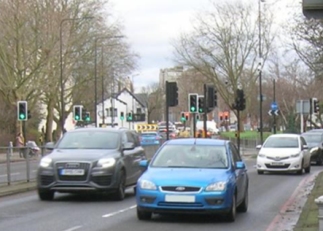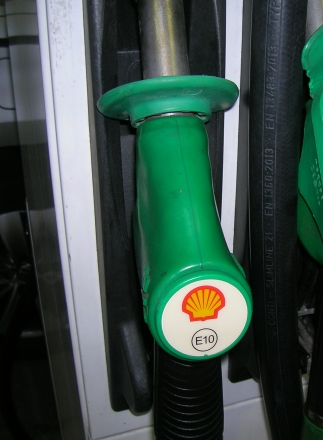Road
user charging to replace fuel duty
What is the the current road use charge based on fuel duty?
Our analysis indicates the current rates of road use charge
based on fuel duty and VAT thereon for four broad categories of vehicles
(light cars, medium cars/MPVs, SUVs and 4x4s are around:
| Vehicle
type |
Pence/mile
|
| Light
car |
7.03
|
| Medium
car/MPV |
7.90
|
| SUV |
9.03
|
| 4x4 |
10.54
|
How many vehicles on UK roads
| Vehicle
type |
Numbers
|
| Light
car |
20.95
bn
|
| Medium
car/MPV |
5,67
bn
|
| SUV |
1.13
bn
|
| 4x4 |
1.75
bn
|
Plus lorries, buses, utility
& emergency vehicles and other types. FBHVC research indicates
there are 1.3m "Historic" vehicles (over 30 years old on
a "rolling basis") which are eligible for VED exemption.
How much fuel duty &
VAT is paid in
the UK in a typical year?
|
Av
fuel consumption mpg
|
Fuel
duty & VAT paid pa
£
|
|
25
|
1,581
|
|
30
|
1,317
|
|
40
|
1,129
|
|
45
|
988
|
|
50
|
878
|
Based on driving 12,500
miles pa and petrol retailing at £1.49/litre. An MGV8 covering
say 2,500 miles pa and averaging 30mpg would pay around £316
of fuel duty and VAT.
What are your views on the future of road-use charges?
Do send your views and any ideas on how to set the charges and collect
them to the V8 Webmaster or post them on the tread on the V8 Bulletin
Board.
V8 Webmaster
See
our full article
Posted: 211221 |
 |
If
the UK Government decides to introduce a system of road user
charging to replace fuel duty as more and more cars become
electric, then it should be as simple as possible in both design
and application. With the UK Government ban on the sale of new
petrol and diesel cars from 2030 and with hundreds of thousands
of electric vehicles already on the road, income from fuel
duty will steadily decline and the question for any Chancellor
of the Exchequer is how will he make up the lost fuel duty revenue?
The shift to electric cars is estimated to bring a drop
of £5 billion a year in fuel duty by 2031 - a large hole
in any budget for a Chancellor. The recent annual tax take from
fuel duty from petrol and diesel sales for cars and other vehicles
has been around £37 billon a year! |
 |
With
the continuing fall in fuel duty income the Chancellor will
have to look for an alternative - some form of road user tax.
As we have had a fuel duty levy on UK motoring for many years
and have all got used to it, it's likely any Chancellor will
conclude it will be continued in some form.
What options are there?
There are basically two approaches to introducing an alternative
form of road use charging:
At one extreme - a complicated scheme of road use charges
based on time, distance travelled and location of the vehicle.
The view of the RAC Foundation has been any time and/or place
charges should be decided locally so, for example, if there
is to be a congestion charge it would make more sense for that
to be a locally designed and managed measure. Those measures
could include congestion charges or peak travel charges. The
RAC Foundation spokesperson does not think the citizens of London
or Greater Manchester or wherever would be that happy if it
was somebody in the Department for Transport deciding what it
should cost for them to do their local driving!
At its simplest - the road use charge would be based
on the distance travelled, which is similar to our paying fuel
duty now when we are really paying for the number of miles we
drive. Many will say "go with the simplest scheme you possibly
can, don't over complicate it." |
|
Charge based
on the distance travelled for all
Motorists who drive electric cars should be prepared for the
introduction of charges based on the distance they cover each
year. A "distance charge" would be less controversial
than road pricing because it can be levied by checking the
annual mileage figure during an MOT test or from an on-board
computer without the state prying into motorists' whereabouts.
But a distance travelled charge would not necessarily distinguish
between rural or semi-rural roads and congested urban or major
roads close to urban areas (like sections of the M42)
and could place a burden on drivers in remote rural areas
with lengthy trips to their nearest commercial, workplace
or retail destinations in the nearest towns.
Charge rate
The likely charge rate would be a single per-mile charge for
each category of vehicle. The charge rate would depend on
a vehicle's weight (hence taking into account the damage
it does to the road) and its tailpipe emissions. The
lighter
|
and
cleaner a vehicle is, the lower the per mile charge. The heavier
and dirtier the vehicle is, the higher the per mile charge.
Tax collection costs
One key concern with any tax system is the cost of collecting
the tax and the consequent effect on the amount of tax collected
net of the collection costs. With fuel duty it's payable as
you pay for each litre of fuel when filling your fuel tank and
it is collected for the Treasury by the fuel retailers. In an
earlier comment from the RAC Foundation in 2017 they envisaged
a per-mile charge, adjusted for the weight of the vehicle,
but collected via insurance companies, presumably during the
term of the current insurance cover or on renewal when the policyholder
is disclosing the mileometer reading on their vehicle. The reliability
and the tamper proof protection built into the devices on vehicles
recording annual mileages would be important as an almost
certain unintended consequence would be criminals devising ways
of circumventing the accurate recording of mileages to avoid
road use charges. |
|




